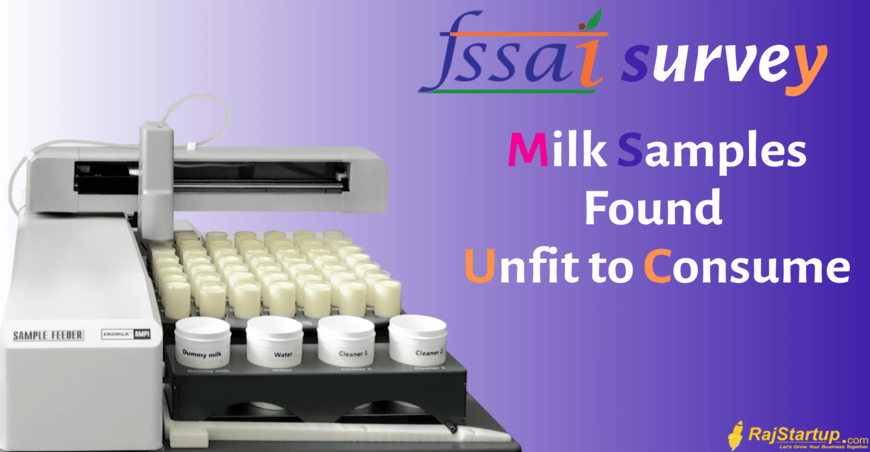Do you know how milk is produced?
Do you know that there are a number of ways that can be used to make artificial milk?
If you don't know these things then you will get shocked by the survey which is done by the FSSAI authority of India. If you want to know more things about the survey read the whole article and in the end, you would get all the information about the survey.
The FSSAI that is the Food Safety and Standards Authority of India is the top food regulator of India which deals with the food safety and standards and ensures that the Food Business Operators are following the principles of the Food Safety and Standard Authority.
As FSSAI is a top food safety regulator of India, it is important for the organization to apply for the FSSAI registration in India to legalize the business and follow the safety standards.
In the first-ever survey that was done on the milk by the FSSAI, the FSSAI authority found that 7 percent of the milk samples are found to be unfit to consume and may cause hazardous issues to the human health and body and 41 percent of the milk samples are not safe to consume and have fewer safety parameters.
The survey was done from 2018 May to 2019 and the survey has covered all the states and territories of India. The main objective of the survey was to monitor the quality and safety of liquid milk in India.
The 6,432 number of milk samples were taken from the various states of the country for the analysis and adulteration.
In the survey, the presence of the Aflatoxin M1 residues found to be more than a limit and it was found 368 out of the 6,432 samples. It means that 5 percent of Aflatoxin M1 was found in the milk samples. This nellai seo is the first in which a deeper survey is done for the compound Aflatoxin M1. The Aflatoxin M1 is toxic and carcinogenic if consumed beyond the limits. The Aflatoxin M1 is a kind of fungus that can get mixed in the milk through the feed and fodder. The compound Aflatoxin M1 was majorly found in the packaged milk products in the top three states and that are Delhi, Tamil Nadu, and Kerala.
According to the survey, it was found that the milk samples have a presence of antibiotics and 1.2 percent of the milk samples were found with the presence of the antibiotics. In total, seven percent of the milk samples were found to be unsafe to consume and may affect the human body badly. 41 percent of the milk sample was found to be of low quality.
The survey helped to identify the presence of the compound and hot spots that can make a bad impact on people's health and can cause hazardous diseases. Hence more intensified and efforts of surveillance should be done in these areas to get the proper milk product for the people.
Overall, 93 percent of the samples found to be safe for consumption and the people can consume it without any health risks.

